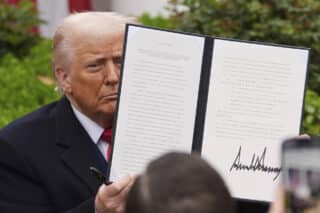On July 20, the 2023 Fifa Women’s World Cup tournament kicks off in New Zealand and Australia, cohosts for this most prestigious competition in women’s football. Among the powerhouses of women’s football will be a team making its debut in this tournament, our very own women’s national football team, also known as the Filipinas. It will play its first match on July 21 against Switzerland, to be followed by matches against teams in its group namely New Zealand and Norway.
What happens after their group stage match no one knows and won’t really matter, because just getting into the World Cup is quite an extraordinary feat on its own. To describe such an achievement as a miracle would not do justice to the years of hard work, determination, and fighting spirit of the players, their coach, and all those involved in the team.
After getting their first medal in 37 years by winning the bronze at the Southeast Asian Games last year, the Filipinas next managed to qualify for the World Cup by reaching the semifinals of the 2022 Asian Football Confederation Cup where they unfortunately lost to South Korea. However, a few months later they would win their first major international cup, the 2022 Asean Football Federation Women’s Championship held in the Philippines. Under their Australian coach, the Filipinas managed to rapidly go up the global ranking of their sport from 68 in 2021 to 46, the highest level they have reached in the team’s history. Undoubtedly, the Filipinas deserve their place among the 32 best women’s football teams in the world, and we should accordingly acknowledge the honor they have brought to our country.
In terms of some of the factors in their recent successes and improvement in the ranking, the Filipinas share a similar characteristic with the men’s national football team in that majority of their players come from the Filipino diaspora spread around the world. For the Filipinas team, the United States, which is a powerhouse in the women’s game, has provided the bulk of players. This approach of tapping the Filipino diaspora for talent in both the men’s and women’s teams has provided the Philippine Football Federation (PFF) with a practical and immediate means with which to achieve significant improvement in the competitiveness of our national teams, while developing and growing the conditions and grassroots infrastructure of the sport locally.
I can’t help but notice the commonality between the PFF’s approach to look to our diaspora to help achieve its objective, with that of the Philippine government’s reliance on our overseas workers to boost our economy. I have no issue with such approach which is both practical and has proven effective given our country’s circumstances. However, its effectiveness should not be enough reason for us to be contented with the current set-up, instead of finding other ways and means to complement it. While there is the saying, “if it ain’t broke, don’t fix it,” there is always wisdom in seeking to further improve and enhance what works.
In this regard, there should be no room for complacency on these matters. True, Filipinos migrating will always be a reality even if considerable progress were achieved by the country; it is part of human nature to move around, to wander. But remember the various political promises made during previous years that, one day, leaving the country would be a matter of choice and not a necessity? When will that promise be fulfilled?
So as we watch, cheer on, and support the Filipinas at the World Cup, let’s also not forget that most of these players are produced by our diaspora. They are the children and grandchildren of Filipinos who left our country for greener pastures overseas. As these players compete and do battle on the football pitch to bring honor to our country, let’s also do our part as citizens to help lay the conditions wherein chasing personal dreams, whether on the football pitch or in our respective lives, won’t lead us to look beyond our shores.
—————-
Moira G. Gallaga served three Philippine presidents as presidential protocol officer, and was posted as a diplomat at the Philippine consulate general in Los Angeles, and the Philippine Embassy in Washington.


